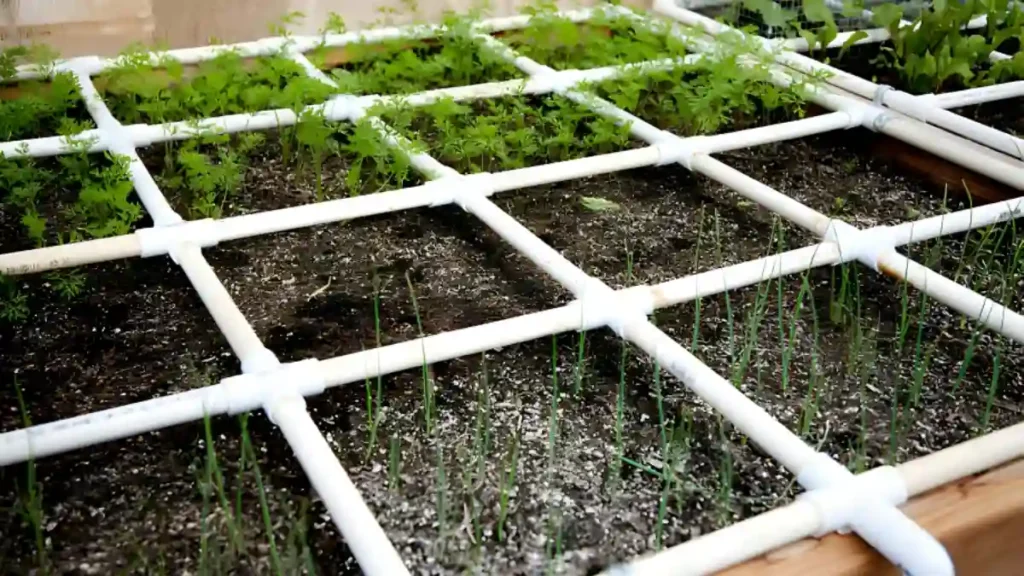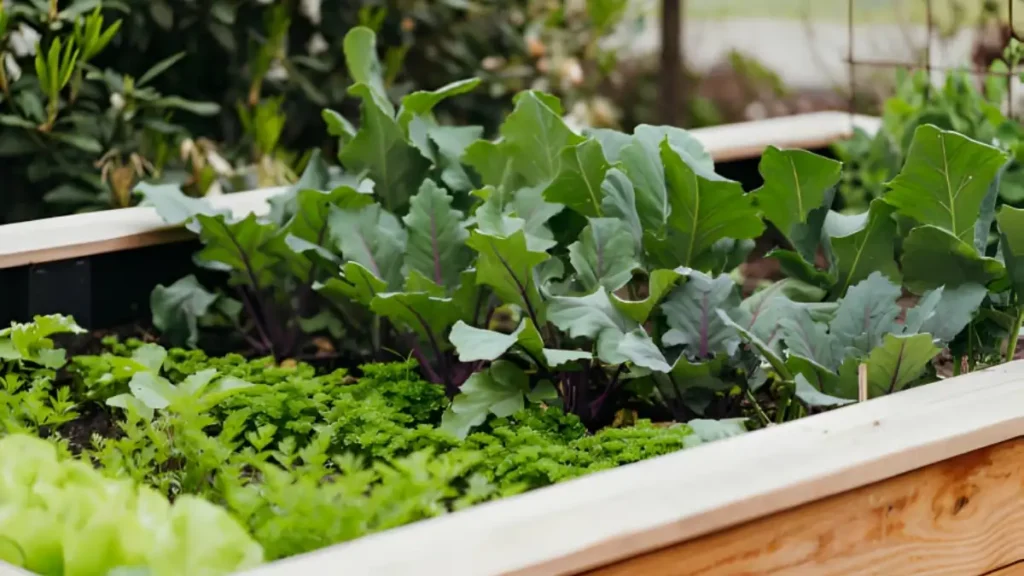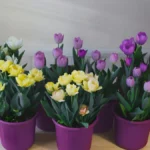Known for its creative use of raised beds separated into square foot parts, square foot gardening is a departure from conventional gardening methods. Even in small urban spaces, gardeners may maximize space, reduce waste, and produce an abundance of harvests by skillfully arranging plants inside these defined regions.
The following are the main ideas of square foot gardening:
- Raised Beds: The garden is constructed using raised beds, each 4 feet by 4 feet. After that, it filled with a nutrient-rich growing medium made of compost, peat moss, and vermiculite.
- Grid System: Using a real or imaginary grid, each raised bed is divided into portions measuring square feet. This facilitates planting organization and facilitates varying crop spacing.
- Intensive Planting: Depending on the size of the plant, a certain number of plants are planted in each square foot. Larger plants like tomatoes require a full square foot, while smaller plants such as lettuce can be planted four to a square foot.
- Crop Rotation: In the square foot sectors, we rotate crops every season to prevent soil depletion and pest problems.
- Companion planting: Plants grow together and help each other out by sharing nutrients and keeping pests away
Directions for assembling a raised bed for square foot gardening:
- Pick a location with good drainage and at least 6 to 8 hours of sunlight per day. Avoid places with inadequate drainage or lots of shade.
- Construct or buy an elevated bed that has a minimum depth of 6 to 12 inches. Square foot gardening has no set size. This is a standard dimension of 4 feet by 4 feet ensuring easy access from all directions.
- Fill the raised bed with premium, well-draining soil. For square foot gardening, a standard mixture is equal parts compost, peat moss, and perlite or vermiculite. To make loose, fertile soil, thoroughly mix these components.

- Make a grid to divide the raised bed into portions that are each square foot. Mark off each square foot using wooden slats, twine, or any other material. This grid facilitates correct crop spacing and helps to coordinate the planting process.
- Plant a different kind of vegetable or herb in each square foot, following the plant’s recommended spacing. Based on the size of the mature plant, the square foot approach usually enables 1, 4, 9, or 16 plants per square foot. To prevent crowding and guarantee appropriate growth, adhere to the spacing standards.
- After planting, give the raised bed a thorough watering to help settle the soil and promote healthy root contact. Sustain a consistent watering schedule to keep the soil consistently moist but not drenched. To prevent wetting the leaves, which might cause disease, irrigate the plants from the base up.
- Spread a layer of organic mulch on the soil’s surface, such as straw or shreds of leaves, to help hold in moisture, keep weeds at bay, and control temperature.
- Regularly monitor your garden for pests, illnesses, and nutritional deficiencies, and take care of plants by pulling weeds, trimming blossoms, and supporting climbing plants as needed.
- Crop rotation is planting various kinds of crops in each square foot from season to season to prevent soil depletion and insect accumulation.
Conclusion:
In summary, this gardening strategy is perfect for tiny yards or urban settings since it emphasizes increasing output in a constrained amount of space. Through meticulous planning and application of square foot gardening methods, people can effectively grow a wide variety of foods with minimal wastage and needless labor.
Certainly! If you’d like to learn more, please consider following our WhatsApp Channel: Harvest Gardening
A frequently asked questions:
Q1: What is Square Foot Gardening?
A1: Mel Bartholomew created the gardening technique known as “square foot gardening” in the 1980s. It entails constructing square-foot-sized raised beds that are compact and heavily planted.
Q2: Can I use Square Foot Gardening for growing fruits?
A2: A person can use a Square Foot Garden to grow various fruits, including melons, cucumbers, dwarf fruit trees, raspberries, and strawberries. Just make sure larger plants have enough room and, if necessary, support structures.
Q3: Can I practice Square Foot Gardening indoors?
A3: Yes, you can use raised beds or containers in a sunny spot—like next to a window or on a balcony—to grow indoors following the concepts of Square Foot Gardening.



